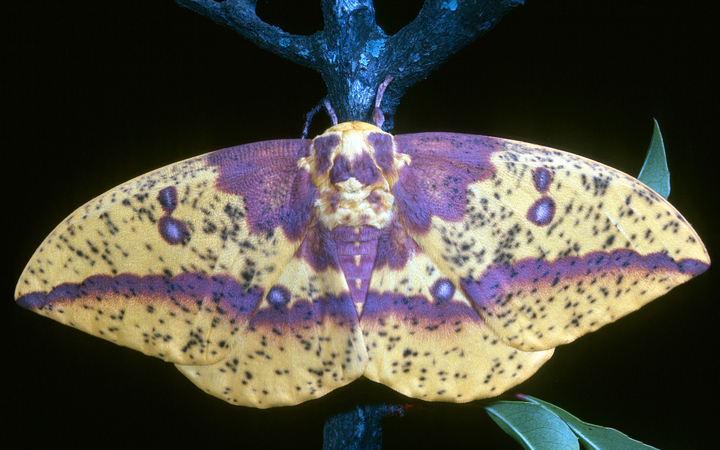Imperial moth caterpillar
The caterpillar, or larvae, of the imperial moth does not have a common name. It is called the imperial moth caterpillar.
It can reach a length of four inches and is about the size of the average person’s thumb. Imperial moth caterpillars come in two colors, green and dark brown. They are harmless to trees and humans.
The imperial moth caterpillar most commonly feeds on pine but is known to eat a variety of other plants. It will eat hickory, persimmon, sweetgum, elm, oak, maple, beech, cypress, and red cedar foliage. Though, it typically won’t jeopardize the health of the tree it feeds on.
Once the caterpillar grows to maximum size, it will crawl to the base of the tree and into the soil to transform into a pupa. This occurs in the fall and is the best time to find one.
Contrary to the butterfly who transforms, or pupates, within a chrysalis, the imperial moth caterpillar does so in the soil without any protective casing. This pupa is dark brown to black, two inches long, and about three-quarters of an inch in diameter. The tail of the pupa is pointed and the head is rounded. The pupa remains in the soil through the winter.

Adult imperial moth
Adult imperial moths emerge in early summer. Like most moths, it is attracted to lights at night. When looking for the moth, a porch light or lantern would be your best bet.
Imperial moths are large and can have a wingspan of up to five inches, which will make them easier to spot.
Females are slightly larger than the male and have bright yellow wings that are speckled with red-brown spots. They also have a horizontal red-brown line across all four wings. The forewings have two small red-brown circles and each hindwing has a single circle.
The male moth is also bright yellow but has considerably more red-brown coloring. The yellow and red-brown color pattern in both sexes can be variable.
If you find an imperial moth caterpillar, it isn’t difficult to rear it into an adult. If found still feeding on the host plant, place the caterpillar, along with some host plant foliage, in a container with plenty of space and air. Fresh foliage should be provided to the caterpillar daily. Two or three inches of loose, moist soil in the bottom of the container would provide a place for the caterpillar to pupate when the time comes. If the caterpillar is found on the ground, chances are it has completed feeding and is searching for a place to pupate. In this case, place the caterpillar in a container with soil and it will likely attempt to pupate. If kept indoors, a beautiful imperial moth may emerge during the winter.


Control
Sometimes the imperial moth caterpillar will be attacked by a parasitic wasp or fly. The larvae of these wasps or flies usually feed inside the body of the caterpillar. It may not be obvious that the caterpillar has been parasitized. A parasitized caterpillar may pupate, but they rarely mature into their adult form.
Although the imperial moth caterpillar appears to be a monstrous pest, these insects do not pose any serious threat to forest health.

